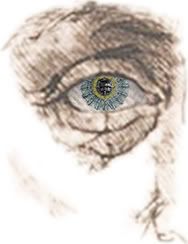I most recently worked in 16mm colour as the Director of Photography for a 30-minute film that played in the Toronto Short Film Festival, called The Devil & Ms. Jones, and excerpted here...
Shooting on film is a great experience, and I do miss it, but not really because of its visual properties (and I'll explain why not in an upcoming post, above). Mostly I miss the challenge of it. Working on film is like flying without a net. Film cameras don't normally come with LCD screens attached, and even when they do, no video monitor can show you how the light will fall on that emulsion. You have to know it in advance, because you've tested on your film stock and you understand the language of light with a fluency that you can get away without on video.
Now there's no doubt that being well-versed in film photography is a big advantage when lighting for DV (much more so than vice versa), but strictly-speaking, it isn't completely necessary to get the job done. So there's a whole range of skills that only gets a vital workout on film. And when you haven't done it in a while ... yeah. You miss it.
Other projects I have shot on 16mm colour include the following two student films from my time at Ryerson in the film certificate program: Filmmaking in Two Easy Steps (as the writer, director, cinematographer, and editor); and The Payoff (as the cinematographer).
Incidentally, the script for Filmmaking in Two Easy Steps is a 16-beat quad, the first one I ever wrote for the screen. And coming full circle in a way I never would have predicted ten years ago,
I've been writing a lot more of them lately.
 full journal
full journal  full journal
full journal 





